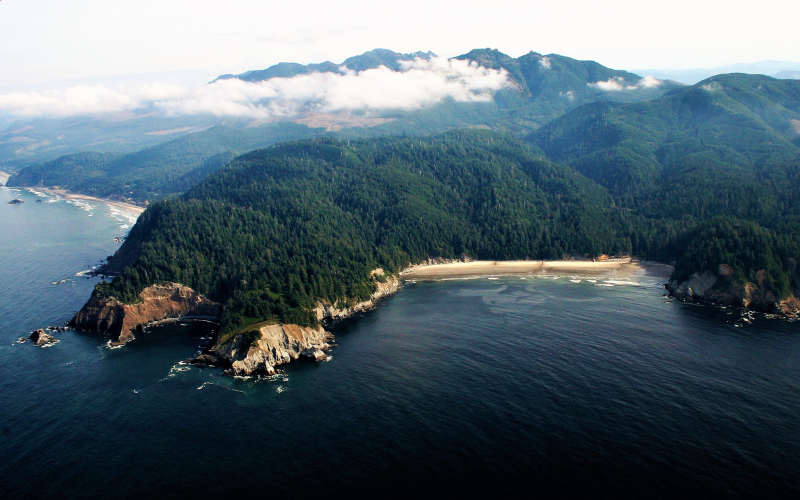
The priorities of climate, connectivity and community emerged from North Coast land Conservancy’s strategic planning process.
NCLC is developing a new conservation plan to help guide decision-making around land acquisitions on the Oregon Coast over the next couple decades. The plan is centered on three priorities: climate resilience, habitat connectivity, and community.
Those concepts, which surfaced during NCLC’s ongoing strategic-planning process, are ways in which to consider and compare the different impacts a given conservation project can have on the future of local communities and ecosystems.
 For example, NCLC is dedicated to conserving the diversity of habitats that exist within its service area and maintaining connectivity between them. Additionally, climate resiliency of coastal landscapes is crucial, as the extreme events and changing patterns that come with climate change threaten the character and function of the ecosystems that are central to the Oregon Coast and human well-being.
For example, NCLC is dedicated to conserving the diversity of habitats that exist within its service area and maintaining connectivity between them. Additionally, climate resiliency of coastal landscapes is crucial, as the extreme events and changing patterns that come with climate change threaten the character and function of the ecosystems that are central to the Oregon Coast and human well-being.
Finally, coastal conservation must include and celebrate diversity amongst people, plants and wildlife. NCLC strives to be a local and regional leader by connecting people with place and providing learning and stewardship opportunities, as well as equitable and just access to land.
NCLC’s conservation team has worked over the past few months to develop the conservation plan, along with a digital prioritization tool. It utilizes GIS (Geographic Information System) technology to compile a host of factors related to land parcels within NCLC’s service area, which stretches from the Columbia River to the Siletz Bay. Some of those factors include salmon-bearing streams, old-growth forest, and connectivity to other public lands, to name a few.
The tool acts as an initial filter to identify potential for future conservation, says associate director Jon Wickersham, adding, “Wherever the most of those important characteristics overlap is where we would start looking for opportunities to pursue land acquisitions or develop conservation initiatives.”
This is an evolution of NCLC’s previous approach, which involved six distinct initiatives that each revolve around a specific geographic area, such as the Coastal Edge or the Necanicum Wildlife Corridor.
“We were trying to make a different conservation plan for each initiative, but now we’re taking a more holistic view and creating a plan that initially starts by looking at the entire service area,” Jon says. “We’re using prioritization models we know have worked well in our smaller initiatives, and trying to apply that methodology more broadly.”
NCLC is in the process of meeting with roughly 40 partners within its service area to vet the plan and provide feedback. Those partners include other natural-resource-related organizations and agencies, as well as elected officials for local municipalities. This is important to ensure NCLC is leveraging partnerships along the coast, tapping into existing networks to make the most of available resources and maintaining awareness of the priorities of the communities and entities within its service area. Each partner also lends a unique perspective and expertise when reviewing the plan.
The goal is to finish meeting with partners by the late fall and then finalize the new conservation plan by the end of the year.
Comments